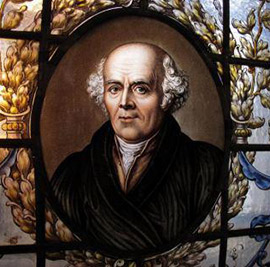

DR CHRISTIAN FRIEDRICH SAMUEL HAHNEMANN
FOUNDER OF HOMOEOPATHY
Homoeopathy, often referred to as the "gentle healing art," is a unique system of medicine that has been practiced for over two centuries. Founded by Dr. Samuel Hahnemann in the late 18th century, homeopathy is based on the principle of "Similia Similibus Curentur" or "like cures like." This means that a substance that can produce symptoms in a healthy person can be used in a highly diluted form to treat similar symptoms in a sick person.
Here's an overview of the Homoeopathic System of Medicine:
1. The Law of Similars: At the core of homoeopathy is the belief that a substance that can cause specific symptoms in a healthy person can stimulate the body's innate healing abilities to overcome similar symptoms when administered in an extremely diluted form. For example, a substance that causes fever-like symptoms in a healthy person may be used to treat someone with a fever.
2. Individualized Treatment: Homoeopathy emphasizes individualized treatment. Homeopaths take into account not only the physical symptoms but also the emotional and mental state of the patient. The goal is to find a remedy that matches the totality of the patient's symptoms, leading to a personalized treatment plan.
3. The Minimum Dose: Homoeopathic remedies are prepared through a process of serial dilution and succussion (vigorous shaking). This process reduces the substance's toxicity while enhancing its therapeutic properties. The more a substance is diluted, the more potent it becomes in stimulating the body's healing response.
4. Holistic Approach: Homoeopathy considers the individual as a whole, recognizing that physical symptoms are often interconnected with emotional and mental aspects of health. By addressing the root cause of illness at all levels, homoeopathy aims for comprehensive healing.
5. Safety and Non-Toxicity: Homoeopathic remedies are non-toxic and generally considered safe for all ages, including infants and pregnant women. They do not produce side effects associated with conventional medications.
6. Chronic and Acute Conditions: Homoeopathy is used to treat a wide range of conditions, including acute illnesses like colds and injuries, as well as chronic conditions such as allergies, autoimmune diseases, and mental health disorders.
7. Complementary Approach: Homoeopathy can be used alongside conventional medicine as a complementary therapy. It does not interfere with other treatments and may help reduce the side effects of certain medications.
